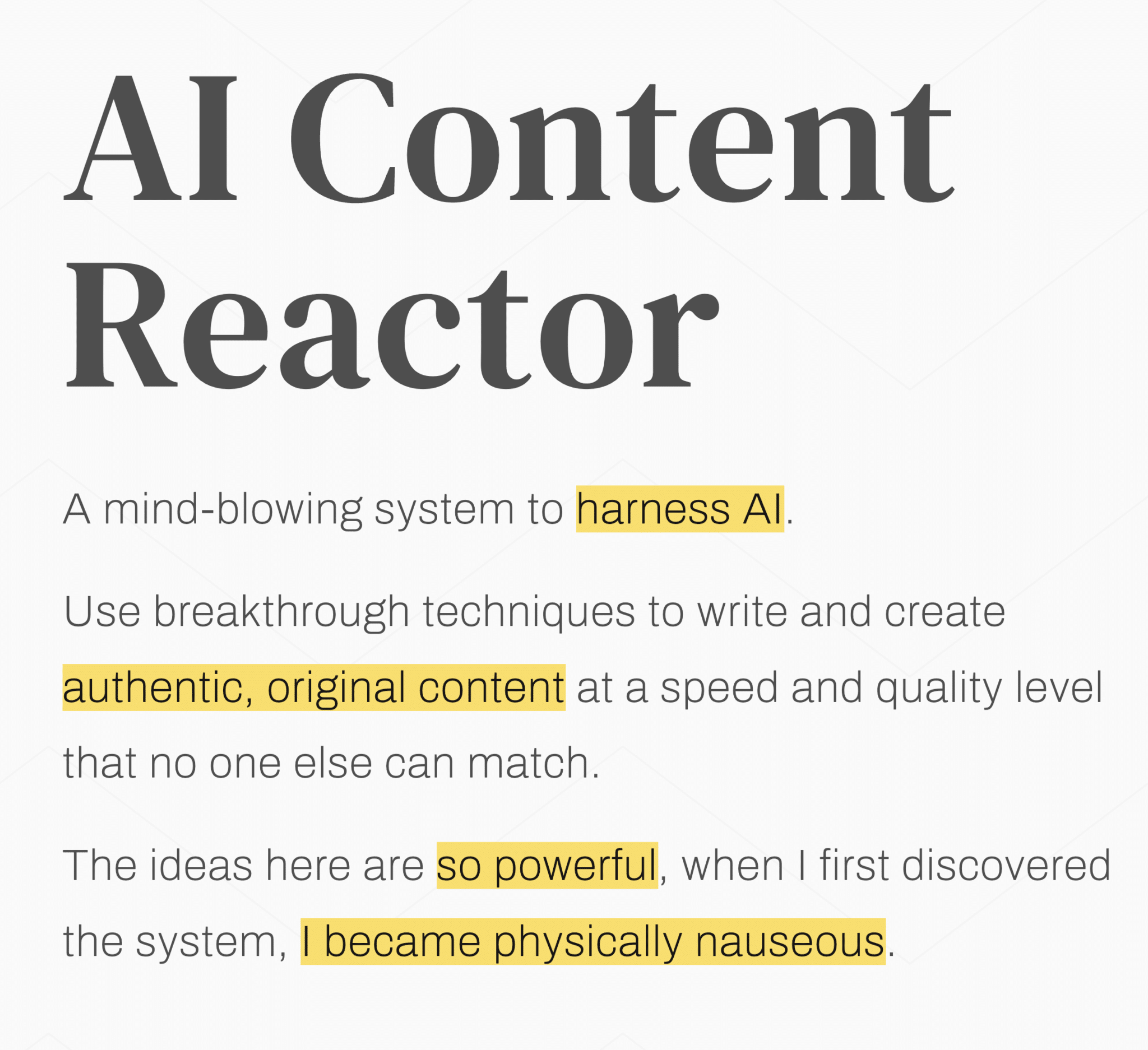Although empathy is considered a soft skill, it is also the stealth powerhouse behind the most resonant marketing. The digital marketer’s secret weapon, it’s often overlooked in favor of data and tactics. However, using empathy in marketing is the difference between messaging that lands and messaging that lingers.
When your marketing is empathetic, it steps into your target market’s experiences. It learns their demographics and behaviors. Empathy addresses their frustrations, hopes, and quiet hesitations in a way that feels authentic and makes them feel heard. This is where trust is born and where true brand loyalty begins.
In today’s hyper-connected world, where customers expect personalized experiences and authentic interactions, empathy is the key to building lasting relationships and meaningful brand loyalty. This in depth guide will lead you through the key components of empathy in marketing, as well as the hits, the misses, and the ethical guidelines.
Table of contents
- Why does empathy matter in digital marketing?
- Understanding consumer emotions helps you connect more deeply.
- Different emotions trigger different types of responses in your audience.
- Technology can help you scale empathy without losing the human touch.
- Empathy in marketing is evolving, but human connection still leads the way.
- What are the ethical considerations in empathy-driven marketing?
- In the end, empathy helps you connect, convert, and keep your customers for the long haul.
Why does empathy matter in digital marketing?
Empathy is the cornerstone of meaningful connections. You learn to see the world through your audience’s eyes. In doing so, you learn to understand their challenges and pain points and how to address them.
“Empathy is essential for building trust, loyalty, and emotional connection with your audience.”
The emotional connection empathy provides builds trust, fosters loyalty, and ultimately drives higher customer lifetime value. When brands prioritize empathy, they:
- Create authentic connections that resonate emotionally.
- Build deeper trust, increasing loyalty, and reducing churn.
- Improve brand perception and customer satisfaction.
- Drive higher return on investment (ROI) through stronger relationships.
Understanding consumer emotions helps you connect more deeply.
Research in neuromarketing reveals that our brains process emotional stimuli faster than rational information. In other words, emotions often guide purchasing decisions rather than logic. This emotional processing is at the heart of effective empathy-driven marketing.
Emotions heavily influence consumer behavior. They act as a major driver in decision-making processes. Problem recognition, information search, and the evaluation of alternatives – all steps in the buying process – are regulated by emotions.
Emotions can also lead to impulse purchases and shape brand loyalty. They can even impact how consumers perceive and interpret marketing messages. With power like that, is it any wonder that empathy matters in marketing?
Here’s a closer look at how emotions impact consumer behavior:
Impulse buying is often driven by excitement, urgency, or a desire to feel included.
Emotions absolutely can trigger impulse buying. This is especially true with positive ones like excitement, anticipation, or even a sense of urgency. You can see this played out during limited-time promotions or exclusive product drops. The emotional thrill of getting a deal or being part of a special moment drives rapid purchasing decisions.
The effective use of social media platforms and personalized marketing can amplify these emotional triggers, leading to higher conversion rates and repeat purchases.
Emotional loyalty builds stronger, longer-lasting customer relationships.
Strong emotional connections with a brand can foster deep customer loyalty, encouraging existing customers to continue choosing the same products and services. When consumers feel part of a brand’s community or experience positive emotions during a purchase, it creates lasting associations and repeat business.
For instance, Apple has cultivated an intensely loyal customer base by building an emotional connection around innovation and lifestyle, resulting in high Net Promoter Scores (NPS) and repeat purchase behavior.
Even how consumers search for information is shaped by how they feel.
Emotions also shape the way consumers search for and interpret information. For example, someone feeling anxious or uncertain might conduct more thorough research to reduce perceived risk. In contrast, someone in a positive, confident mood may selectively focus on information reinforcing their preexisting beliefs. This emotional influence can guide brands in creating content that aligns with customer expectations and needs.
I recently read Michael King’s breakdown of the AI MODE patent, which illustrates how modern search engines are evolving to interpret queries based on behavioral logic. These systems don’t focus on keywords alone. Instead, they break down search queries into logical steps, mapping to user intent and emotional state. This structured understanding of search behavior allows marketers to design empathetic, high-impact content that resonates with users at each stage of their journey.
Consumers use emotion to help evaluate different options before making a choice.
Emotions play a crucial role when evaluating different options. Consumers might use emotional cues to weigh the pros and cons. Emotional and social cues can include excitement, fear of missing out (FOMO), or even guilt.
For instance, a shopper choosing between two competing products and services may lean toward the one that evokes a sense of pride, trust, or accomplishment. These emotional drivers can directly impact conversion rates and overall customer satisfaction.
Emotionally resonant content is more effective for marketing than just listing facts.
Advertising research consistently shows that emotional responses to an ad have a stronger influence on a consumer’s intent to buy than purely factual content. Campaigns like Nike’s “Just Do It” or Coca-Cola’s “Share a Coke” tap into powerful emotions like motivation, belonging, and happiness to drive brand loyalty.
Brands that effectively tap into these emotional triggers can improve customer satisfaction. This leads to increased customer retention and higher NPS.
Customer experiences that make people feel good keep them coming back.
“Brands that monitor and optimize customer interaction at every touchpoint can create memorable experiences that keep existing customers engaged and satisfied.”
This feels like one of those “duh” moments. Of course, making people feel good keeps them coming back. Yet, a lot of brands still miss this.
Simply put, positive emotional experiences with a brand lead to higher customer satisfaction and loyalty, while negative experiences can damage brand perception and drive customers away. This is why customer service, personalized messaging, and thoughtful brand interactions are critical to long-term success. Brands that monitor and optimize customer interaction at every touchpoint can create memorable experiences that keep existing customers engaged and satisfied.
Different emotions trigger different types of responses in your audience.
Interestingly, targeting a specific emotional trigger can do well, or it can backfire. It all depends on the type of customer, which is why audience segmentation and message framing are key. Emotions that don’t fit with a customer’s values or expectations can alienate instead of connect.
Let’s look at a few common emotions to see this in action:
Anger can make consumers more decisive and less likely to compromise.
Anger often pushes them toward strong, action-oriented decisions. However, it can also lead them to leave a brand, depending on how the marketing is received.
This is precisely what happened in Gillette’s “We Believe” campaign. The ad generated:
- Praise for tackling toxic masculinity and standing for something socially relevant.
- Backlash from customers who felt accused or alienated, triggering boycotts and public outrage.
- Although not necessarily a failure, the campaign was divisive and highlighted the risk of using anger or moral critique in marketing.
Fear and disgust are powerful survival emotions.
Fear and disgust are often used to provoke urgency, trigger protective instincts, or highlight problems a brand can solve. Fear and disgust can steer customers toward trusted brands or products, especially those that offer reassurance, safety, or relief.
Yet, these emotions also trigger avoidance behavior. If your messaging evokes too much fear or comes off as manipulative, your audience might tune out, reject your brand, or spread negative word-of-mouth. Disgust is even more volatile: it’s tied to our deepest instincts to withdraw and protect ourselves.
Real-world case in point:
“Fear can prompt action, but it’s a scalpel, not a sledgehammer”.
- Some anti-smoking PSAs that leaned too heavily into grotesque imagery ended up being less effective for some viewers, especially younger audiences. The disgust and fear caused defensive avoidance instead of reflection.
- On the other hand, brands like Lysol or Purell have successfully used fear/disgust in subtle ways (like highlighting “hidden germs on doorknobs”) to encourage habitual product use without repelling customers.
How do you walk the line as a marketer? Fear can prompt action, but it’s a scalpel, not a sledgehammer. If you overdo it, your brand might end up associated with anxiety rather than assurance.
Nostalgia is one of the most effective emotional levers in marketing.
Nostalgia taps into memory, identity, and a longing for “the way things were.” When done well, nostalgia builds warmth, trust, and even a sense of belonging.
When people feel nostalgic, they’re emotionally open, less critical, and more likely to trust and repurchase, especially from brands that feel like “old friends.” This can be a powerful tool for heritage brands that want to improve customer satisfaction and loyalty.
As with other emotions, however, it’s a fine line for brands to walk. Nostalgia only works when it’s earned. Forced throwbacks or “remember this?” campaigns that feel hollow or opportunistic can actually alienate audiences.
If your “nostalgic moment” doesn’t align with your brand story or feel emotionally honest, it falls flat fast.
Consumers are highly sensitive to inauthenticity, especially Millennials and Gen Z. If that nostalgic moment doesn’t align with your brand story or feel emotionally honest, it falls flat fast.
We can look at Nintendo’s revival of classic consoles like the NES Classic, which sold out immediately. Sales were driven almost entirely by nostalgic attachment. However, brands that slap vintage fonts on low-quality products often face backlash for cheapening the emotional connection.
Understanding these emotional drivers is crucial for marketers who want to connect with their type of customer on a deeper level. By aligning their messaging with the emotional triggers that resonate most with their target audience, brands can foster stronger customer relationships, enhance loyalty, and drive more impactful, long-term results.
Technology can help you scale empathy without losing the human touch.
Modern marketing tech is the poster child for automation and efficiency. It also offers powerful tools for delivering more human, emotionally aware experiences. With the right tools and ethical approach, brands can extend empathetic connections across channels, audiences, and time zones.
Let’s look at a few ways that’s happening right now:
AI-powered chatbots are getting better at emotionally intelligent conversations.
Gone are the days of robotic scripts and clunky “How can I help you today?” loops. Today’s AI-powered chatbots can recognize emotional cues, like frustration, in customer messages and respond with human-like understanding.
For example, a basic bot might say, “We apologize for the delay,” when a customer expresses dissatisfaction. However, a smarter empathy-trained chatbot might respond with, “I understand how frustrating this must be,” creating a more empathetic interaction. This approach resolves issues quickly, defusing tension and making customers feel valued, which boosts brand loyalty.
Personalized content algorithms help people feel understood by your brand.
Personalization is a cornerstone of empathy-driven marketing. AI can analyze user data to deliver highly relevant content that matches a user’s interests, preferences, and emotional state.
For instance, Spotify’s Discover Weekly playlist or Netflix’s recommendations are winning because of how well they use personalization. They create a sense of being understood, enhancing user satisfaction and fostering long-term loyalty.
When your Discover Weekly playlist feels like it knows your mood better than you do, that’s AI-powered empathy in action. This data-driven approach helps brands anticipate customer needs and provide a more tailored experience.
Immersive experiences like VR and AR make emotional storytelling even more powerful.
Virtual and augmented reality (VR and AR, respectively) put your audience right in the middle of the story. They allow brands to create deeply engaging, emotionally resonant experiences.
For example, VR can transport users to a disaster relief zone to understand where donations go. Companies like IKEA use AR to let customers visualize furniture in their homes before buying, reducing hesitation and increasing confidence in purchasing decisions.
Emotion AI can detect and respond to customer emotions in real time.
Even thought it’s a bit sci-fi and somewhat fantastical, this is already happening. Emotion AI detects and responds to a customer’s emotional state using real-time facial recognition, voice analysis, and biometric data. This technology can be used in customer support, healthcare, and even education to create more personalized and emotionally attuned interactions.
Right now, there are healthcare companies using emotion AI to identify signs of anxiety or depression in patients. Armed with this information, they can offer timely support and resources. This kind of tech anticipates needs rather than reacting to them.
Voice assistants and NLP are making digital interactions feel more personal.
Natural Language Processing (NLP) has come a long way. Voice assistants like Amazon’s Alexa and Apple’s Siri use NLP to understand not just what you’re saying but how you’re saying it. It makes interactions feel more personal and engaging.
Some systems are beginning to adjust their tone based on your stress level or word choice, bringing the experience closer to real human interaction. For brands, this opens the door to more intuitive, emotionally aware customer service, especially in voice-based commerce.
Some brands use AI for good, and customers feel that, too.
Empathy goes beyond tone of voice and user experiences, focusing directly on values. Beyond marketing, some organizations are using AI for genuinely altruistic purposes.
For instance, AI is being used to:
- improve medical diagnostics
- develop personalized treatment plans
- predict disease outbreaks
- optimize crop yields
- reduce water waste in agriculture
- support more sustainable practices
- help neurodivergent users access education
Innovations like these address pressing global challenges and create a positive emotional connection by demonstrating a brand’s commitment to making a difference.
Ethical data use builds trust and reinforces your brand values.
You can’t really fake empathy. You either have it or you don’t. Your customers either feel it, or they get the sense that you’re being disingenuous. And nowhere is this more obvious than in how you handle user data.
You can’t really fake empathy. You either have it or you don’t.
Using data ethically and transparently is critical to building empathy through technology. Brands that respect user privacy and use data responsibly are more likely to earn customer trust. If your data practices contradict your brand values, no clever copy or AI-powered chatbot will save you.
Brands like Patagonia have built emotional loyalty through messaging and matching actions with values. Their environmental advocacy is consistent, transparent, and rooted in purpose. Customers don’t just buy the gear; they believe in the mission. Or rather, they buy the gear because they believe in the mission.
Authenticity is still the most important ingredient.
You can simulate empathy with AI. You can personalize content with algorithms. You can even detect emotion with innovative tools. But if your message doesn’t feel genuine, your audience will smell it a mile away.
Genuine empathy appears in:
- Honest, human communication
- Thoughtful user experiences
- Consistent values in action
That’s what makes a brand relatable. And that’s what turns emotional resonance into long-term trust.
Let’s be blunt. Empathy works. It builds stronger relationships, boosts conversion, increases retention, reduces customer acquisition costs, and lowers churn. But it’s not a checkbox or a tactic you slap on at the end. You have to mean it. Otherwise, it’s just manipulation with better lighting.
When empathy is baked into the way you communicate, serve, and evolve—across both tech and team—you don’t just attract customers. You build a community.
Empathy in marketing is evolving, but human connection still leads the way.
Without human intent behind your empathy-driven, AI-implemented marketing strategy, it’s just clever programming.
AI and machine learning are becoming more advanced in leaps and bounds. Embedded in marketing systems, the tools to understand customer emotions at scale are getting sharper and faster. From natural language processing to sentiment analysis, we can now analyze millions of data points and respond with tailored messaging that meets people where they are.
Leaning hard into automation is tempting. After all, it can feel like the holy grail: personalized, responsive, always-on communication.
But here’s the thing. Tools aren’t empathy. They can support it, enable it, maybe even simulate it. But without human intent behind your empathy-driven, AI-implemented marketing strategy, it’s just clever programming.
Nothing points this out more than Klarna’s failed OpenAI experiment. According to Futurism:
“The buy-now-pay-later company had previously shredded its marketing contracts in 2023, followed by its customer service team in 2024, which it proudly began replacing with AI agents…
“‘From a brand perspective, a company perspective, I just think it’s so critical that you are clear to your customer that there will be always a human if you want,’ admitted Sebastian Siemiatkowski, the Swedish fintech’s CEO.
“That’s a pretty big shift from his comments in December of 2024, when he told Bloomberg he was ‘of the opinion that AI can already do all of the jobs that we, as humans, do.’ A year before that, Klarna had stopped hiring humans altogether, reducing its workforce by 22 percent.”
I think it’s pretty clear that empathy-driven marketing isn’t about using AI to guess what someone wants to hear. It’s actually another tool to help brands create real, respectful relationships and know when to step back and just listen.
Marketers need to balance personalization with privacy to keep consumer trust.
The most empathetic brands will be the ones that prioritize privacy as part of the user experience rather than a legal footnote.
There’s a growing tension between what technology can do and what customers are comfortable with. Hyper-personalization can feel magical or invasive. It all depends on how transparently you communicate, and how much control your audience has.
Consumers are savvy. They’ll share data when there’s value in return. But once they feel manipulated or surveilled, that trust evaporates fast. And once it’s gone, it’s hard to get back.
Empathy means asking:
- Does this serve the customer, or just our bottom line?
- Are we giving them control—or just more targeted noise?
The most empathetic brands will be the ones that prioritize privacy as part of the user experience rather than a legal footnote.
What are the ethical considerations in empathy-driven marketing?
Empathy becomes manipulative the moment it’s used to exploit emotions rather than serve people. That’s why ethics should be the foundation of empathy-driven marketing, not the side note. If your strategy pulls emotional levers without considering consent, transparency, or intent, it might work in the short term, but it can wreck your reputation long-term.
Ethical principles means respecting user privacy, avoiding manipulation, and ensuring data is used responsibly. Trust is hard to earn but easy to lose, and transparency is a cornerstone of strong brand loyalty.
The Good
Some brands use empathy to stand for something bigger than their products, and customers feel that. Patagonia’s environmental commitment, Dove’s real beauty campaign, and Ben & Jerry’s social justice stances are emotionally resonant and values-aligned. These brands don’t just say they care; they build operations, campaigns, and content that reflect those beliefs. That consistency builds real, long-term trust.
The Bad
Some companies fall into the trap of emotional manipulation. Think of fear-based sales tactics that create urgency (“Only 2 left!” when there’s not), guilt-based appeals, or brands that jump on social causes during trend spikes but disappear when it’s inconvenient. This kind of behavior can erode credibility and create emotional fatigue in your audience.
The result is that, while you may still get the click, you won’t earn the loyalty that brings them back.
The Ugly
The more emotionally tuned your messaging is, the more important it becomes to ask: Is this in the service of the customer or are we just pushing buttons?
At its worst, empathy gets weaponized. Worst-case scenarios involve outright exploitation, like we saw in scandals like Cambridge Analytica, where emotional data was mined and manipulated for political gain. These breaches of trust can damage reputations and lead to massive legal and financial consequences.
The bottom line is that empathy in marketing has power. And with that power comes responsibility. The more emotionally tuned your messaging is, the more important it becomes to ask: Is this in the service of the customer or are we just pushing buttons?
Ethical empathy is the long game, and it’s the one that wins.
Using emotions to influence behavior isn’t new. Marketers have been doing it for eons. What’s changed is the scale, the stakes, and the consumer’s expectations.
Growth and transformation come from deep, authentic connections, not shortcuts.
But the truth is, you can’t “growth hack” your way into someone’s trust. You have to earn it. And that starts with ethical choices, like how you collect customer data, how you use it, and how you talk to people along the way.
Here’s a quick framework to keep your empathy-driven marketing grounded:
- Transparency: Be clear about what you collect and why.
- Respect: Always prioritize consent and data dignity.
- Authenticity: Don’t say what you think people want to hear. Say what’s true.
- Growth with purpose: Focus on long-term relationships, not short-term gains.
Remember, as the saying goes, “No mud, no lotus.” Growth and transformation come from deep, authentic connections, not shortcuts.
In the end, empathy helps you connect, convert, and keep your customers for the long haul.
Empathy in marketing isn’t being soft, it’s being smart. More than a “nice-to-have,” it’s a fundamental component of effective customer engagement.
Empathy is understanding what your customers care about, what they struggle with, and what they hope for. It’s speaking to them, not at them. When customers feel understood and valued, they are more likely to become repeat buyers and brand advocates. They stick around. They tell their friends. They become part of your brand story.
In a digital-first world where human connection is too often missing, empathy is your competitive edge. It’s not just the future of marketing, and what makes marketing worth doing at all.
Ready to create marketing that connects on a human level? We can help you build a strategy that puts empathy (and results) at the center of your customer experience. Let’s talk strategy.



































